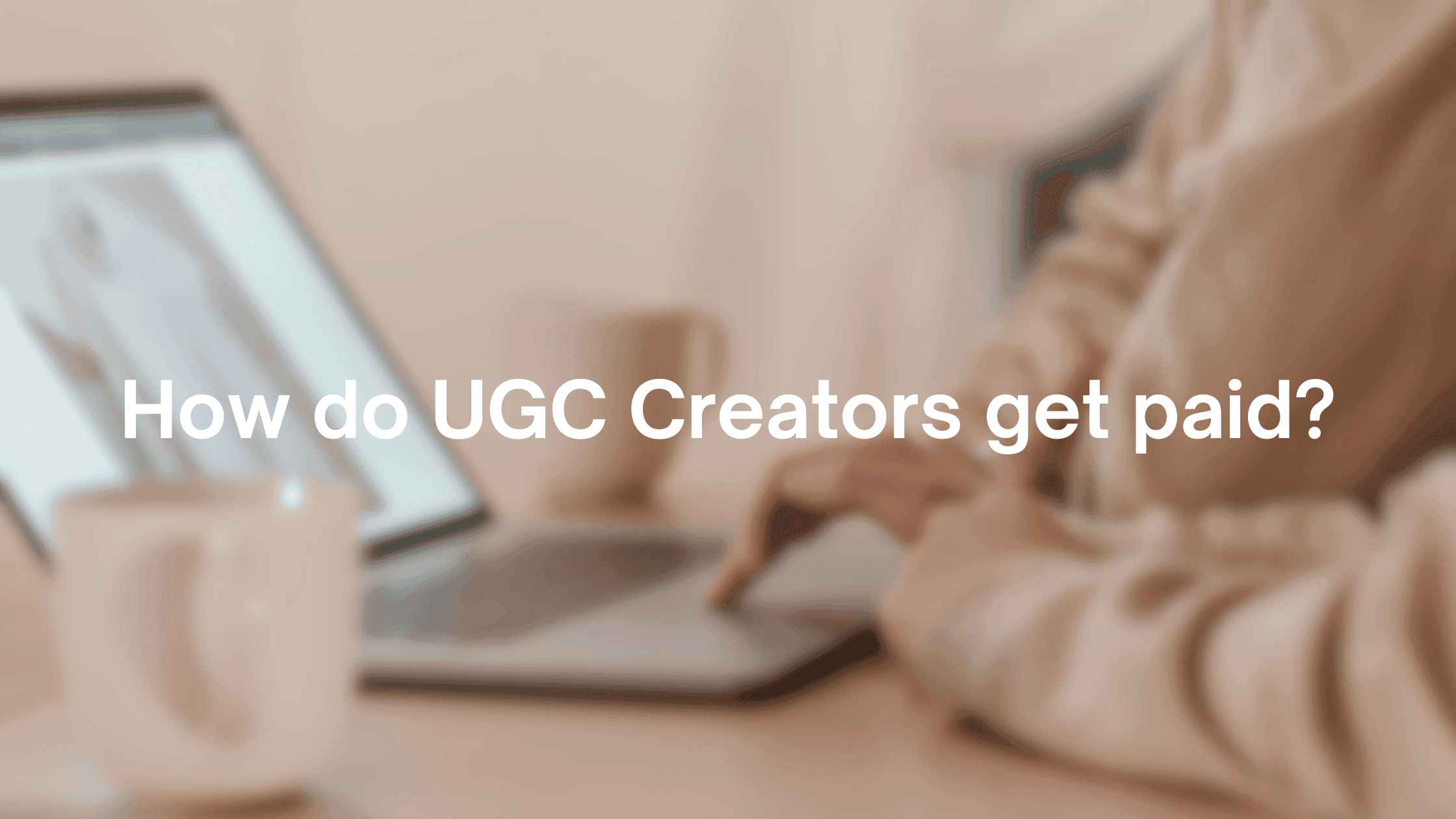

2024-08-06
User-generated content (UGC) has come a long way. It used to be all about regular people sharing their honest opinions about brands on social media just because they wanted to. There was no money involved, just excitement over a great product or service. Brands loved this and sometimes asked if they could share that content, maybe giving a small thank you payment in return.
But things have changed. Now, brands are hiring people to create custom UGC for them. This has led to the rise of UGC creators. So, how do these creators get paid? Let’s dive into the ways UGC creators make money and why brands are jumping on this trend.
Back in the day, UGC was all about people sharing their love for products on social media. They’d post pictures, videos, or just talk about their favorite stuff. Brands noticed and loved this genuine content because it came from real customers. Sometimes, brands would ask to share this content on their official pages and might give a small payment or a freebie as a thank you.
Nowadays, brands aren’t just waiting for customers to post about them. They’re hiring UGC creators to make content for them. This has created a whole new job market. But how do these UGC creators get paid? Let’s break it down.
When a brand works with an influencer, they’re paying not just for the content but for access to the influencer’s audience. Influencers can charge anywhere from $500 to $45,000 for a single post, depending on their following. Even if only a small fraction of an influencer’s followers buy the product, it can still lead to significant sales.
In contrast, UGC creators are paid just for creating the content. According to influencer marketing platform LeaLi, UGC creators charge between $100 and $2,500 for a 60-second video. This makes it a cost-effective option for brands.
Many brands have faced layoffs and budget cuts, leaving them without the in-house teams needed to create social media content. Almost half of all marketers say staffing issues prevent them from creating all the content they need. This is why more brands are turning to UGC creators to fill the gap.
UGC creators are great at promoting products in a way that feels genuine and not too salesy. This is important because 80% of consumers prefer to learn about a brand through real customer recommendations rather than influencer promotions. People are more likely to trust and make purchases based on content from someone who feels like a friend or peer.
For marketers, finding the best way to bring in business is key. Paying creators to produce UGC is a relatively new idea, but it’s already proving effective. A 2023 survey by EnTribe found that 86% of consumers trust brands using UGC over influencer marketing. Another study by Power Reviews found that 80% of consumers value user-generated images more than photos from brands or retailers when considering a purchase. With these stats, it’s no wonder more brands are working with UGC creators.
The most straightforward way UGC creators get paid is through direct payments from brands. When a brand hires a creator, they agree on a price for the content. This can vary widely depending on the creator’s experience, the type of content, and the brand’s budget.
There are several platforms and marketplaces where UGC creators can connect with brands. These platforms often handle the payments, making it easier for both parties. Some popular platforms include:
A platform that makes it extremely easy to find UGC Creators
Cohley:
A platform that matches brands with creators across various social media platforms.
HashtagPaid:
Known for bringing marketers and creators together
In some cases, UGC creators might work on a commission basis. This means they get paid based on how well their content performs. For example, a creator might earn a percentage of the sales generated from their content. This model can be more lucrative but also carries more risk.
UGC creators sometimes receive products or services in exchange for their content. While this isn’t direct payment, it can still be valuable, especially for creators who are just starting out. In some cases, creators might also get paid a fee in addition to receiving the product.
Some UGC creators use affiliate marketing to earn money. They promote a product and include a special link or code. When someone makes a purchase through that link, the creator earns a commission. This can be a good way to make ongoing income from a single piece of content.
Having a portfolio of high-quality content is crucial for UGC creators. This shows potential clients what they can expect and helps creators negotiate better rates. Learn how to create a UGC Portfolio here.
Social media trends change quickly. UGC creators who stay updated with the latest trends can create content that feels fresh and relevant, making them more attractive to brands.
Networking with other UGC creators can lead to collaborations and new opportunities. Joining online communities and attending industry events can help creators build valuable connections.
Offering a variety of content types (photos, videos, reviews, etc.) can make a UGC creator more versatile and appealing to brands. This can also lead to more opportunities and higher earnings.
It’s important for UGC creators to set clear terms and have contracts in place. This ensures both parties understand what’s expected and helps protect the creator’s rights.
The rise of UGC creators marks a significant shift in how brands approach content marketing. By paying for UGC, brands get authentic, cost-effective content that resonates with consumers. For creators, this opens up new opportunities to earn money doing what they love. Whether through direct payments, platforms, commissions, or affiliate marketing, there are various ways UGC creators can get paid. As this trend continues to grow, we can expect even more innovative ways for creators and brands to collaborate.